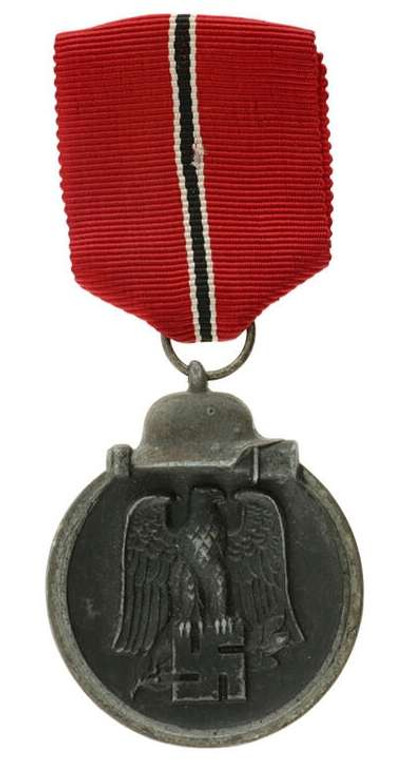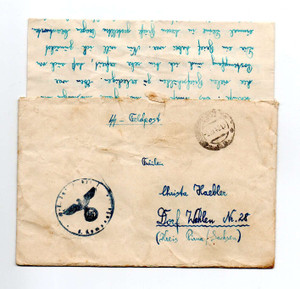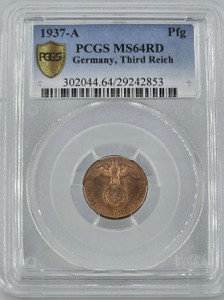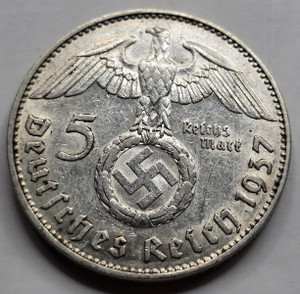
Germany WWII Military Third Reich nazi medal 1941 - 1942 Winter campaign in Russia
With ribbon. Fe. 36,53 mm. 20.59 g. XF.
Generally made of zinc. The medal was given a gun-metal coloured coating.
The concave obverse side features a national socialist eagle grasping a swastika with laurel behind.
The reverse features the text in capital letters: “WINTERSCHLACHT IM OSTEN 1941/42” (“Winter Battle in the East 1941/42”) featuring a crossed sword and branch below the text. A helmet and stick grenade below the medal loop as well as outer ring were finished in a polished silver effect.
The ribbon featured a central white-black-white (white for snow, black for the fallen soldiers) stripe with red (for blood) either side. The medal and ribbon were presented in a paper packet with the name of the medal on the front and the maker name on the reverse.
The Eastern Front Medal (or Medaille „Winterschlacht im Osten 1941/42“) was a World War II German military decoration awarded to both German and Axis personnel. It was awarded to those who served on the German Eastern Front during the winter campaign period of 15 November 1941 to 15 April 1942.
The medal was instituted on 26 May 1942 and was commonly known as the Ostmedaille (East Medal) or Russian Front Medal.
The medal was wryly called the Frozen Meat Medal or the “Order of the Frozen Flesh” (or Gefrierfleischorden in German) by Heer, Luftwaffe and Waffen-SS personnel to whom it was awarded. Armed service personnel qualified for the badge after a minimum of 14 days served in active combat; 30 combat sorties for Luftwaffe members; 60 days of continuous service in a combat zone; being wounded or suffering a “frozen limb”, severe enough to warrant the issue of a Wound Badge.
The medal could be awarded posthumously. It was officially decommissioned by Oberkommando der Wehrmacht on 4 September 1944.








